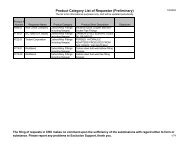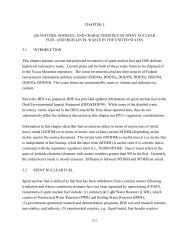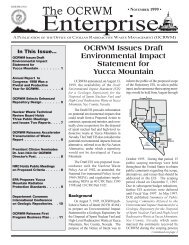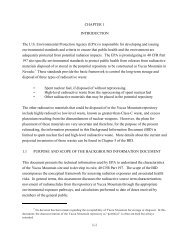E-Commerce Commission Press Kit
E-Commerce Commission Press Kit
E-Commerce Commission Press Kit
Create successful ePaper yourself
Turn your PDF publications into a flip-book with our unique Google optimized e-Paper software.
How quickly individuals change their behavior in favor of the Internet, and away from othermedia, is difficult to determine. Recent studies indicate that as use of the Internet increases,television viewing declines. 60 However, some of today’s Web businesses point out that circulationfor their existing newspapers and magazines has not dropped, even while their Web audiencesincrease. They state that some in the online audience are also found among their most loyal printreaders, but look to each medium to satisfy different purposes. For instance, Business Weekreports that visitors to its Web site read the front page article and then use the site to research themagazine’s archives and special report sections, features they do not have in the print version.It may take a number of years before the impact is felt. For instance, McGraw-Hill’s financialinformation services division began to distribute its products electronically over ten years ago. Upuntil three years ago, print revenues made up 85 percent of the division’s sales. Today, digitalproducts account for more than 50 percent of sales.Lower Capital and Distribution CostsThe New York Times invested $350 million in its new printing press. Readers can now see frontpagephotos in color instead of black and white. Readers accessing the New York Times on theWeb not only see color photos from the print version’s front page, they get radio clips, colorspreads on special feature sections for the Web only, and the chance to interact with other NewYork Times readers interested in the day’s or week’s hot topics.Web content businesses require a much lower capital investment than their print counterparts,lowering the barrier to entry in this online industry. With the Internet, the content of a newspaperor a magazine does not have to be printed and delivered to news stands or doorsteps across thecity in order to be consumed—steps that add 30 to 40 percent to the cost of the product.Instead, content delivered via the Internet can be entered directly into a computer, stored digitallyon a server and appear directly on a reader’s computer screen with a few simple commands thereader enters on the Web site. The consumer can then read the information on the screen or printit out. The publisher’s distribution costs include paying off the investment in the Web servers andother technology that ensures that when someone enters the site, it responds quickly. Unlikenewspaper or magazine content that gets used once, digitally-stored content offers the potentialfor repeated repackaging and reuse. Once the content has been created and stored, there is littleor no extra cost to send it to one reader or 1,000 readers. That increases the efficiency of thenewspaper and magazine businesses dramatically.However, simply establishing a presence on the Internet does not guarantee that a business willsucceed. Building brand awareness through advertising and marketing is critical to success in anew and rapidly evolving market, particularly on the Internet where consumers have the choice ofspending their time and money at thousands of different sites. If the Internet evolves in such away that a limited number of sites become the “funnel” that guides a viewer through its vastcontent, businesses looking to appeal to mass audiences may have to pay large fees to secure“shelf space” on those sites. Or, they may be excluded altogether. In this scenario, advertising25
















